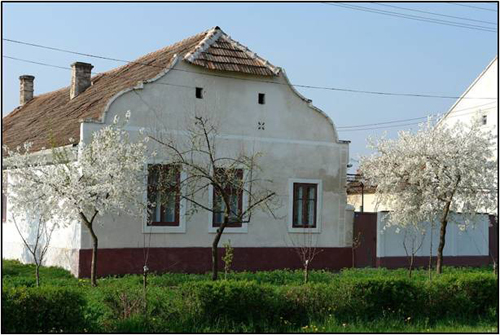
Distinctive architecture in the Danube-Swabian town of Lenauheim. Image source: www.lenauheim.de
What were they thinking in the House of Hapsburg when they looked at the Banat area of Romania in 1718? The newly conquered region had been part of the Ottoman Empire for 200 years but now lay devastated by warfare. Did they see an opportunity to create a model civilization, one that would bring order out of chaos and return revenue to the crown while extending Austria’s power?
Dr. Timothy Anderson wants to use his Fulbright Scholarship to examine the villages that were likely a product of central planners in Vienna but that resulted in a unique cultural landscape not seen elsewhere in Europe. Did this controlled experiment give Austria an opportunity to attempt comprehensive planning for a collectivist welfare state?
Evidence of colonization—a large-scale, systematic effort to send German-speaking farmers west resulting in hundreds of centrally planned agricultural villages—still dominates the landscape in western Romania. As seen from above, the villages follow a mostly regular rectilinear form, but circular hamlets and other village forms are interspersed to give the region a distinct pattern.
A map of the Danube-Swabian town of Alexanderhausen from 1833. Image source: www.dvhh.org/alexanderhausen
“Together, these town and villages comprise a planned, systematic settlement pattern that is found in few other places in Europe, and as such sets this region apart,” notes Anderson, an Associate Professor of Geography in the Ohio University College of Arts & Sciences. “These village forms include gridded towns, street villages, and circular hamlets.”
While much research has focused on the social and political history of the colonization, little scholarly attention has been given to the origin and development of the unique cultural landscapes that were likely a product of state policies in Hapsburg colonial territories such as the Banat.
“In effect, the re-settlement of the Banat amounted to a controlled experiment, an internal colonization of a newly acquired territory where cameralist policies could be implemented and put to use,” Anderson says. “In cameralist thought, the focus of state power was on increasing the wealth of the state, subordinating all parts of the economy to a central bureaucracy that emphasized the survival of the regime and the importance of comprehensive planning for a collectivist welfare state.”
Anderson’s research will address the structure of the planned villages and how they reflect Austrian policies and goals. He will look at how and why planners chose to employ a variety of different village forms in the Banat. And he will examine what historical-political cameralist discourses “materialized” in the various elements of this distinctive cultural landscape.
Anderson’s research will take him to the Timis County region in western Romania. In addition to studying satellite imagery, he will conduct fieldwork in six settlements, mapping each village’s layout, inventorying historic structures such as houses and churches, photographing the cultural landscape elements for documentation, and interviewing local historians.
Street scene in the Danube-Swabian town of Lenauheim. Image source: www.dvhh.org/lenauheim
He will study local archival records—including parish maps, account books, and early maps—as well as the Romanian National Archives and the Austrian State Archives.
“The fieldwork in the study villages, supplemented by materials collected during the archival research, will inform and address the primary research question: In what ways to do the cultural landscapes of German-speaking settlements in the Romanian Banat, especially village form and layout, reflect Hapsburg colonial policies and goals?”
Anderson’s Fulbright is a teaching-research fellowship in which he will teach two courses in the Geography Department at the University of the West.
At Ohio University, he teaches mainly upper level and graduate courses. “I strongly believe that each student should come away from my classes with a greater cognizance of their ‘place’ in the world, with a better understanding of how both the towns in which they live and themselves as individuals are connected to, and affected by, political, economic, and cultural forces operating at the global level.”


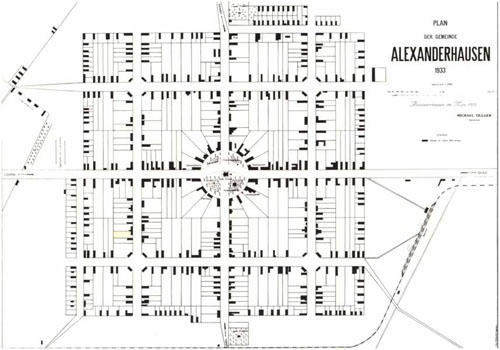

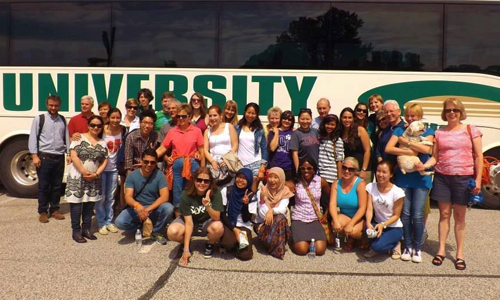
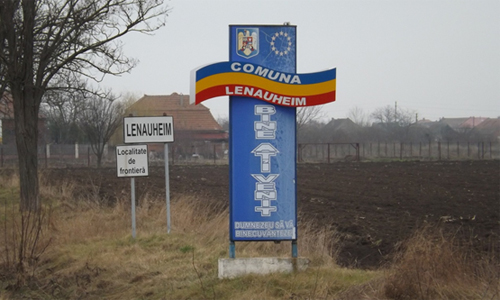

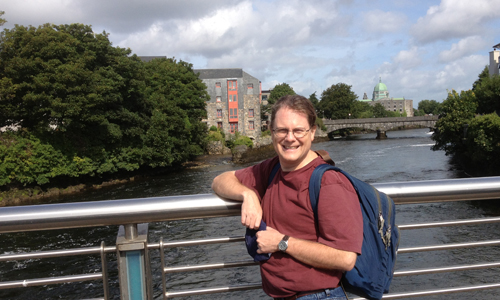













Comments